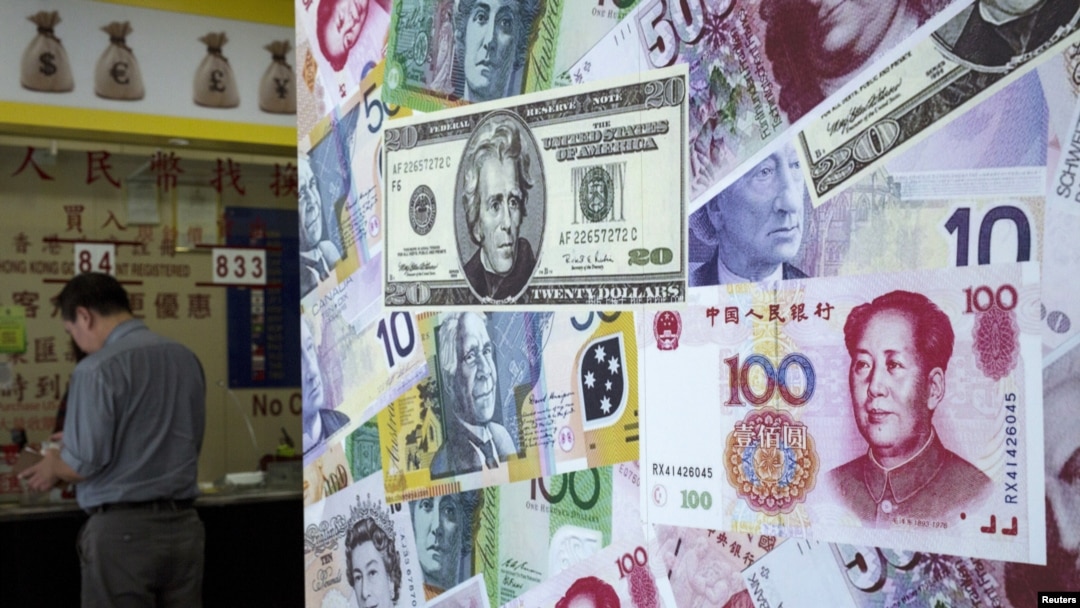China's policymakers think they can stem a rapid rundown of their foreign exchange reserves and ease pressure on the currency by pump-priming the economy to meet this year's growth target, sources involved in policy discussions said.
Beijing will channel funds mainly into infrastructure projects, including railways, roads and airports, and the central bank will cut interest rates and bank reserve requirements, policy insiders say, reigniting fears of reverting to an old stimulus playbook at odds with an official drive to reform the economy.
"If we can stabilize growth, yuan depreciation expectations could be changed," said an influential economist who advises the government.
"We need to stabilize growth by stepping up fiscal policy support," he said.
The Ministry of Finance did not immediately respond to a request for comment.
But meeting an arbitrary growth target might not satisfy global markets, who are increasingly worried that imbalances in the economy are not being addressed.
Beijing, mindful of the lessons learned in 2008-09 when a massive stimulus package saddled the economy with debt, may assess spending plans more carefully this time and make sure projects are financially sound, policy insiders say.
A report by Citi economists said policymakers risked a deeper "recession," which they defined as a significant increase in unemployment and excess capacity, if stimulus favored investment rather than encouraged a shift to consumption-driven growth.
The economists said they feared that "even if a timely fiscal stimulus is implemented, its composition is likely to be such that excess capacity in the traditional industries and sectors is enhanced, thus avoiding an early recession only by raising the risk of a later but deeper and longer recession."
The signals are that spending will be directed to traditional engines. China's top planning agency, the National Development and Reform Commission (NDRC), has approved about 800 billion yuan ($126 billion) of railway, port and highway projects so far this year.
Government spending jumped 26 percent in August from a year earlier as Beijing tries to re-energize flagging growth. "Investment faces big downward pressure, and it's difficult to boost exports, while there is more room to maneuver on fiscal policy," said an economist at a well-connected think-tank.
The world's second-largest economy, which is heading for its slowest growth in 25 years, grew at an annualized 7 percent over the first half of 2015, stronger than many expected, but data suggests it has lost momentum in the third quarter.
Forex worries
The central bank has been using its foreign exchange reserves since mid-2014 to support the yuan, but pressure on the currency has intensified since a surprise devaluation on Aug. 11.
In the face of a surge in capital outflows, the central bank sold down its forex reserves by a record $94 billion in August, taking the cumulative drop to $436 billion, or 11 percent, since a June 2014 peak of $3.99 trillion.
The yuan-buying intervention has also tightened liquidity conditions, forcing Beijing to cut reserve requirement ratios for banks, to release funds into the market.
"It will be troublesome if market expectations [for the yuan] become one-sided," said a senior economist at a top government think-tank.
Premier Li Keqiang has repeatedly said the yuan will be held basically stable and there was no basis for more depreciation. "He is obviously worried," said the think-tank economist.
China may see further declines in its reserves, which are still the world's largest, if pressure on the yuan and capital outflows persist because of domestic weakness or external factors such as a U.S. rate rise.
Analysts differ on the minimum reserves needed to ensure sufficient cover for imports and debt, with some government economists putting it at $2 trillion.
China will conduct checks on firms' foreign exchange buying to prevent speculation and step up a crackdown on illegal cross-border money transactions, an official at the country's foreign exchange regulator said on Thursday.
"We should strengthen supervision on FX outflows, but it's far from reaching a stage that we employ real capital controls," said the influential economist who advises the government.
The credibility of Beijing's economic forecasting could be critical to stemming the outflows, especially as top leaders meet in October to determine the next five-year plan for 2016-2020.
Sources have said the plan is likely to maintain a growth target of about 7 percent, driven by a previous goal to double GDP in the 10 years to 2020.
"Their determination to safeguard this year's growth target is great" said a government economist. "So is the difficulty," he added.


